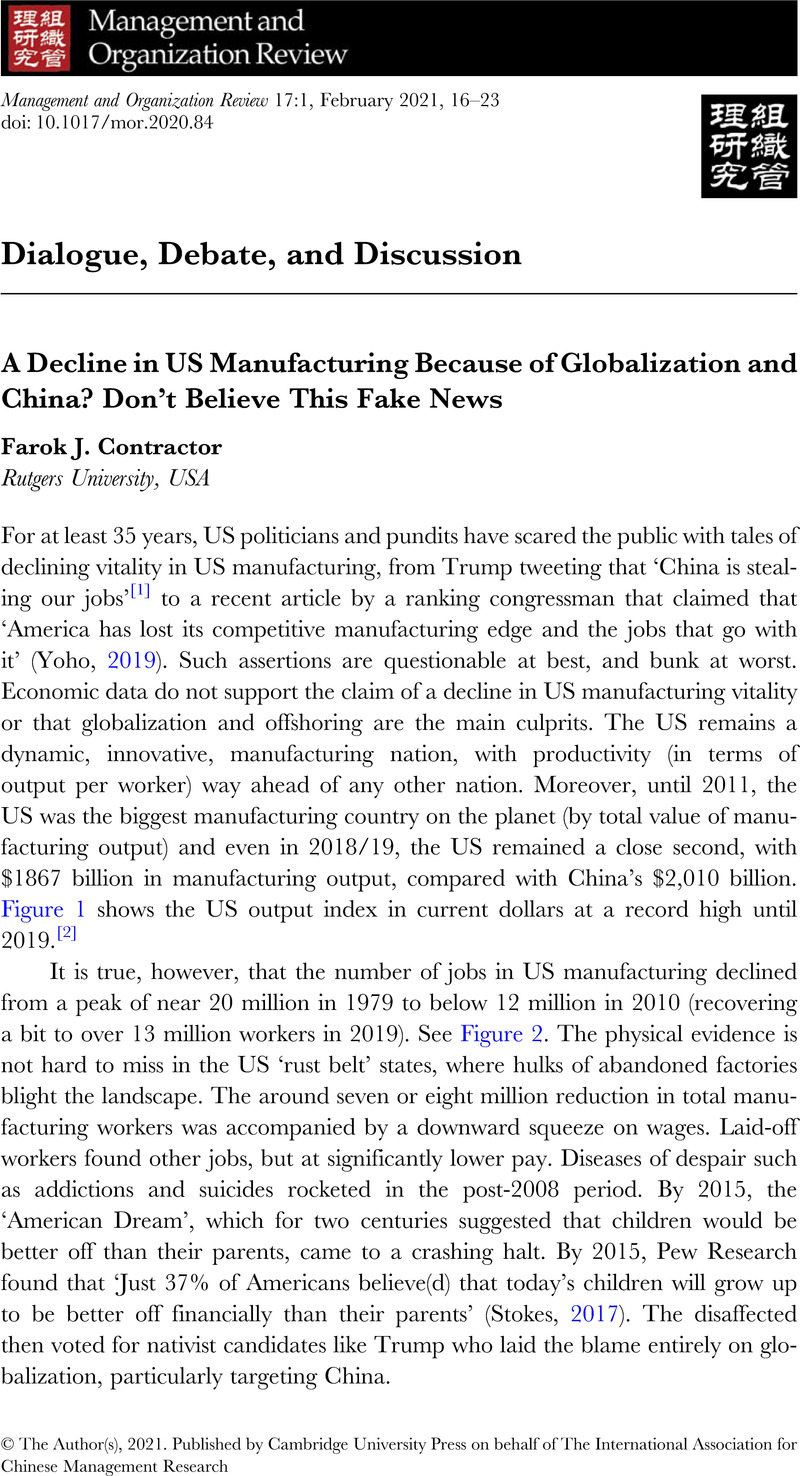Crossref Citations
This article has been cited by the following publications. This list is generated based on data provided by Crossref.
Witt, Michael A.
Li, Peter Ping
Välikangas, Liisa
and
Lewin, Arie Y.
2021.
De-globalization and Decoupling: Game Changing Consequences?.
Management and Organization Review,
Vol. 17,
Issue. 1,
p.
6.
Rose, Elizabeth L.
2021.
The Decline of US Manufacturing: Issues of Measurement.
Management and Organization Review,
Vol. 17,
Issue. 1,
p.
24.
Sambharya, Rakesh B.
Contractor, Farok J.
and
Rasheed, Abdul A.
2022.
Industry globalization: construct, measurement and variation across industries.
Multinational Business Review,
Vol. 30,
Issue. 4,
p.
453.
Bhandari, Krishna Raj
Zámborský, Peter
Ranta, Mikko
and
Salo, Jari
2023.
Digitalization, internationalization, and firm performance: A resource-orchestration perspective on new OLI advantages.
International Business Review,
Vol. 32,
Issue. 4,
p.
102135.
MATKOVSKAYA, Yana S.
2023.
Deglobalization processes in the global economy and prospects for its innovative development.
Economic Analysis: Theory and Practice,
Vol. 22,
Issue. 1,
p.
4.






Target article
A Decline in US Manufacturing Because of Globalization and China? Don't Believe This Fake News
Related commentaries (1)
The Decline of US Manufacturing: Issues of Measurement